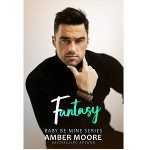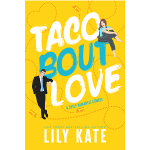Here is the summary of Textual Relations by Lauren Rowe
In today’s hyperconnected world, the way we communicate has undergone a revolution. The rise of digital technology and the proliferation of smartphones have fundamentally altered our textual relations – how we interact with each other through written messages, emails, social media, and more. While these digital tools have undoubtedly brought convenience and efficiency to our lives, they have also ushered in new challenges and complexities in the way we express ourselves and maintain relationships.
One of the most striking changes in our textual relations is the sheer volume of communication we engage in daily. Instant messaging platforms, email, and social media have made it possible to be in constant contact with friends, family, and colleagues. While this accessibility fosters connection, it also blurs the line between work and personal life, sometimes leading to feelings of overwhelm and burnout.
Moreover, the brevity of digital communication, often characterized by text messages and tweets, has transformed the way we express our thoughts and emotions. The limitations of character counts and the absence of nonverbal cues challenge our ability to convey nuance and context effectively. Misunderstandings can easily arise when tone and intent are lost in translation.
The prevalence of emojis and stickers has emerged as a creative solution to this challenge. These tiny, expressive icons help us infuse emotion and context into our messages. They serve as a modern form of nonverbal communication, helping to bridge the gap between text and spoken words. However, even with emojis, the risk of misinterpretation remains, as their meanings can vary between individuals and cultures.
Furthermore, digital communication offers a sense of anonymity that can both liberate and inhibit expression. Some people find it easier to share their thoughts, feelings, and vulnerabilities through text, as it reduces the fear of immediate judgment or rejection. Online communities and support groups have flourished, providing spaces for individuals to connect and share their experiences.
On the flip side, anonymity can also lead to a darker side of online communication, where individuals hide behind screens to engage in hurtful, harmful, or deceitful behavior. Cyberbullying, trolling, and online harassment have become pressing issues in the digital age, highlighting the need for responsible and ethical communication online.
Maintaining meaningful relationships in the digital age presents a unique set of challenges. While we can connect with people across the globe with just a few clicks, the quality of these connections can sometimes feel superficial. Social media platforms, designed for constant updates and curated personas, often encourage comparison and envy, impacting our self-esteem and mental well-being.
Furthermore, the instant gratification offered by digital communication can undermine our ability to engage in deeper, face-to-face conversations. The desire for quick replies and the addictive nature of notifications can lead to a constant state of distraction, making it difficult to be present in the moment with those around us.
The concept of “ghosting” has also emerged as a phenomenon in modern dating and friendship dynamics. Ghosting involves abruptly cutting off all communication with someone, often without explanation or closure. While it may be viewed as an easy way to avoid confrontation, it can leave the other person feeling hurt, confused, and disrespected.
As we navigate these complexities, it is crucial to reflect on how we can foster healthier textual relations. Practicing digital etiquette, such as being mindful of response times and using clear, respectful language, can go a long way in nurturing positive online interactions. Additionally, prioritizing face-to-face communication and cultivating meaningful, offline relationships can help balance our digital lives.
The digital age has given us unprecedented opportunities to connect, share, and express ourselves, but it has also challenged us to adapt to new norms and behaviors. Our textual relations have evolved, offering both benefits and pitfalls. It is up to us to navigate this landscape thoughtfully, preserving the essence of meaningful communication and connection while embracing the possibilities of the digital age. In doing so, we can strike a balance that allows us to thrive in a world where textual relations play an ever-expanding role in our lives.
Relevant File technicalities:
. Name of Title: Textual Relations
. Author Name: Lauren Rowe
. Language for Reading: English
. Supportive Formats: PDF/ePub
. Cost For Getting: Free to Download
. Genre: Romantic Comedy
. Series: None
. Price: Free
. Publish Date 17 Sept, 2023
Textual Relations by Lauren Rowe Download PDF
Download your desired file snap on the button specified below to download Textual Relations by Lauren Rowe The download method is fully financed without any spammy or broken links with the infant quality of PDF and ePub. All the links on our servers are quick, clean, and free from panic and spammy advertisements. You may also like Having the Dragon’s Baby by Milly Taiden PDF Download








